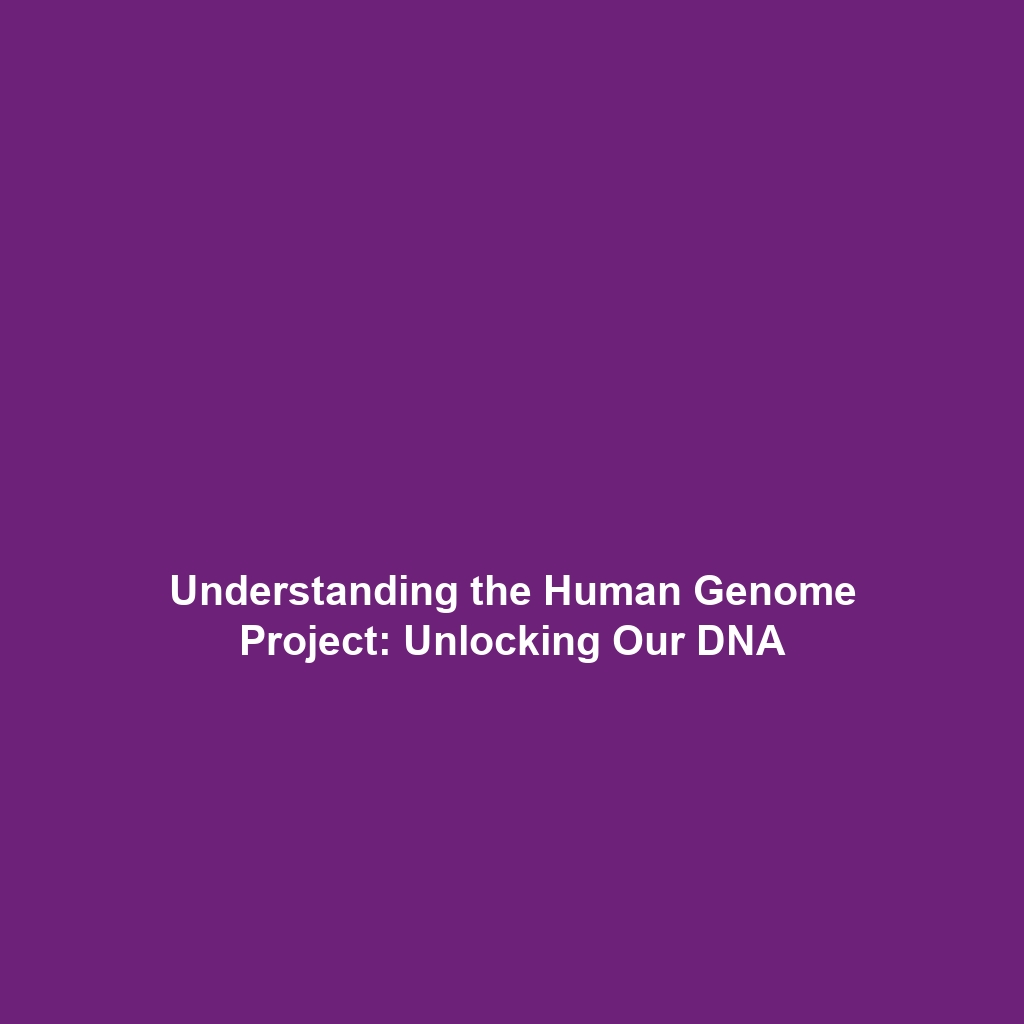What is the Human Genome Project (HGP)?
Introduction
The Human Genome Project (HGP) is a landmark scientific endeavor that mapped and sequenced the entire human genome, providing invaluable insights into human biology and genetics. Initiated in 1990 and completed in 2003, the HGP has significantly shaped the fields of genetics and biomedicine by unveiling the complexities of human DNA. This project not only enhances our understanding of genetic diseases but also lays the groundwork for innovative research and therapeutics. As we delve deeper into what the Human Genome Project entails, we will explore its vital role in advancing science and health.
Key Concepts
Understanding the Human Genome
The HGP’s primary goal was to identify the approximately 20,000-25,000 genes in human DNA and determine their sequences. This monumental project provided the foundational knowledge necessary for genomics.
Principles of Genomic Sequencing
The principles of genomic sequencing employed in the HGP include:
- DNA sequencing technologies that identify the precise order of nucleotides.
- Bioinformatics tools for data analysis and interpretation.
- International collaboration among scientists for a comprehensive approach.
Applications and Real-World Uses
The applications of the Human Genome Project (HGP) are vast and transformative. Here are some notable examples:
How HGP is Used in Medicine
The knowledge derived from the HGP has led to:
- Personalized medicine that tailors treatment based on an individual’s genetic makeup.
- Improved diagnostics for genetic disorders, enabling early detection and intervention.
- Advancements in gene therapy for previously untreatable genetic conditions.
Current Challenges
Despite its monumental success, the Human Genome Project (HGP) faces several challenges:
- Challenges in Data Interpretation: The sheer volume of genomic data complicates analysis and necessitates advanced bioinformatics solutions.
- Ethical Issues: Concerns regarding privacy and the potential misuse of genetic information continue to emerge.
- Limited Access: There exists a disparity in access to genomic technologies and treatments across different populations.
Future Research and Innovations
Looking ahead, research related to the Human Genome Project (HGP) is poised for exciting developments. Key areas include:
- Innovations in CRISPR and gene-editing technologies that aim to rectify genetic disorders.
- The integration of artificial intelligence in genomics for enhanced data interpretation.
- Research focusing on the human microbiome and its interaction with the genome, broadening our understanding of overall health.
Conclusion
In summary, the Human Genome Project (HGP) stands as a monumental scientific achievement that transformed our understanding of genetics and medicine. Its implications are profound, affecting everything from individual healthcare to global medical practices. As we move forward, continuous research and ethical considerations are vital to harnessing its full potential. For more information on related topics, please visit our sections on genetics and personalized medicine.

